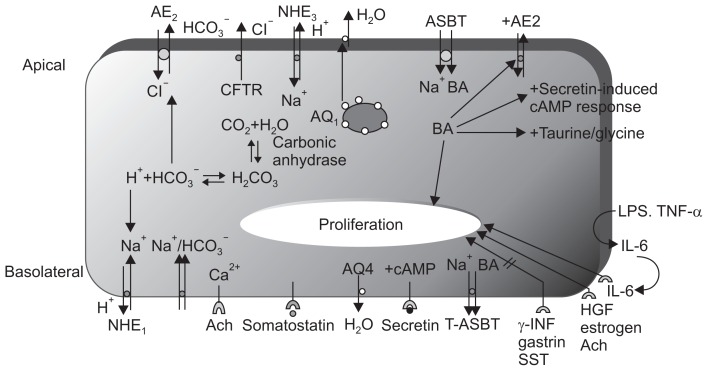Fig. 3.
Membrane transporters/receptors/channel proteins in cholangiocytes.1,53–55 The choleretic effect of secretin is mediated by increases in cAMP, the activation of cAMP-dependent Cl− channels (CFTR), and the subsequent ductal secretion of bicarbonate. Aquaporin water channels (regulated by secretin) appear to play an important role in this process. cAMP-dependent Cl− secretion enables the mobilization of intracellular Ca2+ stores and the activation of Ca2+-dependent apical membrane Cl− channels. The NHE1 isoform regulates secretin-stimulated ductal secretion. Numerous hormone/peptide receptors have been identified on the basolateral domain of cholangiocytes. Several of these receptors (VIP and bombesin) modulate ductal choleresis, whereas other receptors (gastrin and somatostatin) inhibit basal and secretin-stimulated choleresis. The apically located ABAT enables the entry of bile salts into cholangiocytes, whereas the truncated form of ABAT eliminates bile salts from the basolateral membrane.
AE, anion exchanger; CFTR, cystic fibrosis transmembrane conductance regulator; NHE, sodium-hydrogen exchanger; ASBT, apical sodium-dependent bile acid transporter; cAMP, cyclic adenosin mono-phpsphate; LPS, lipopolysaccharide; TNF, tumor necrosis factor; IL, interleukin; HGF, hepatocyte growth factor; Ach, acetylcholine; INF, interferon; SST, somatostatin; VIP, vasoactive intestinal peptide; ABAT, apical bile acid transporter.

